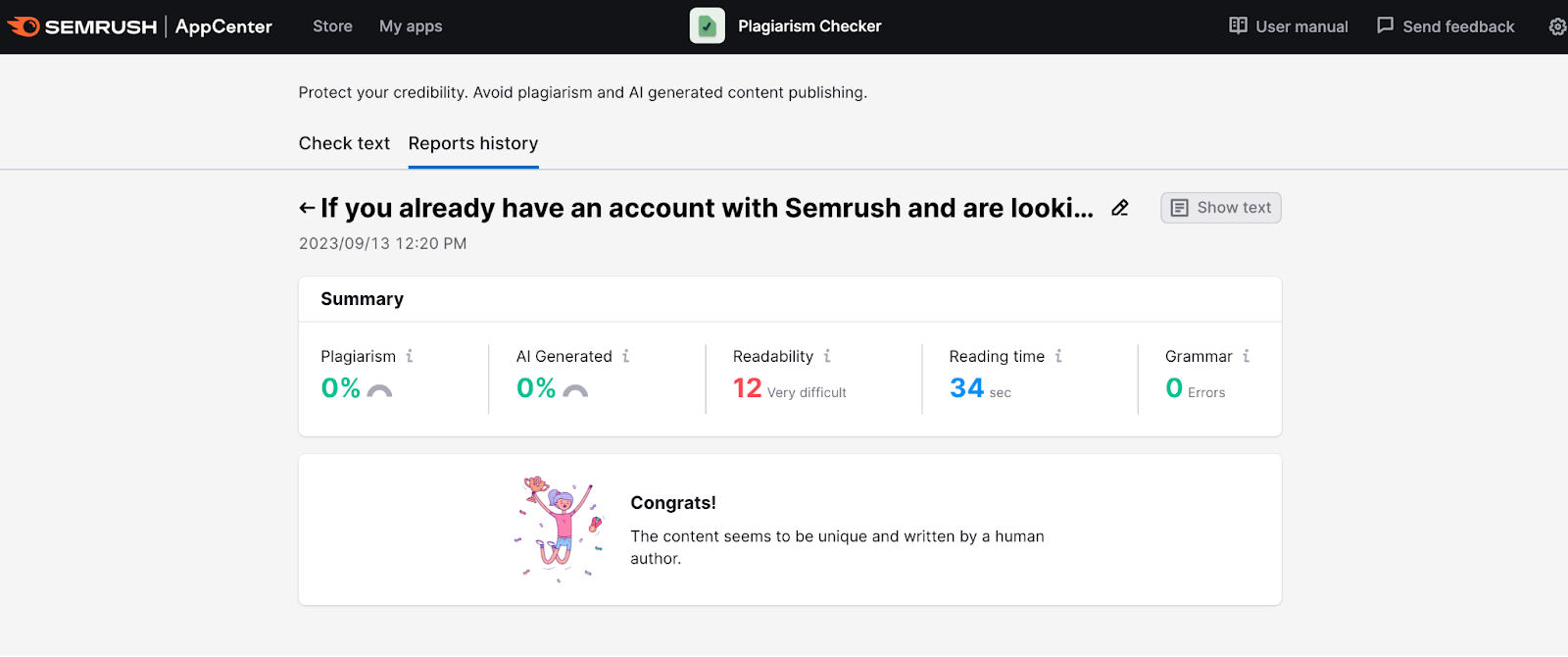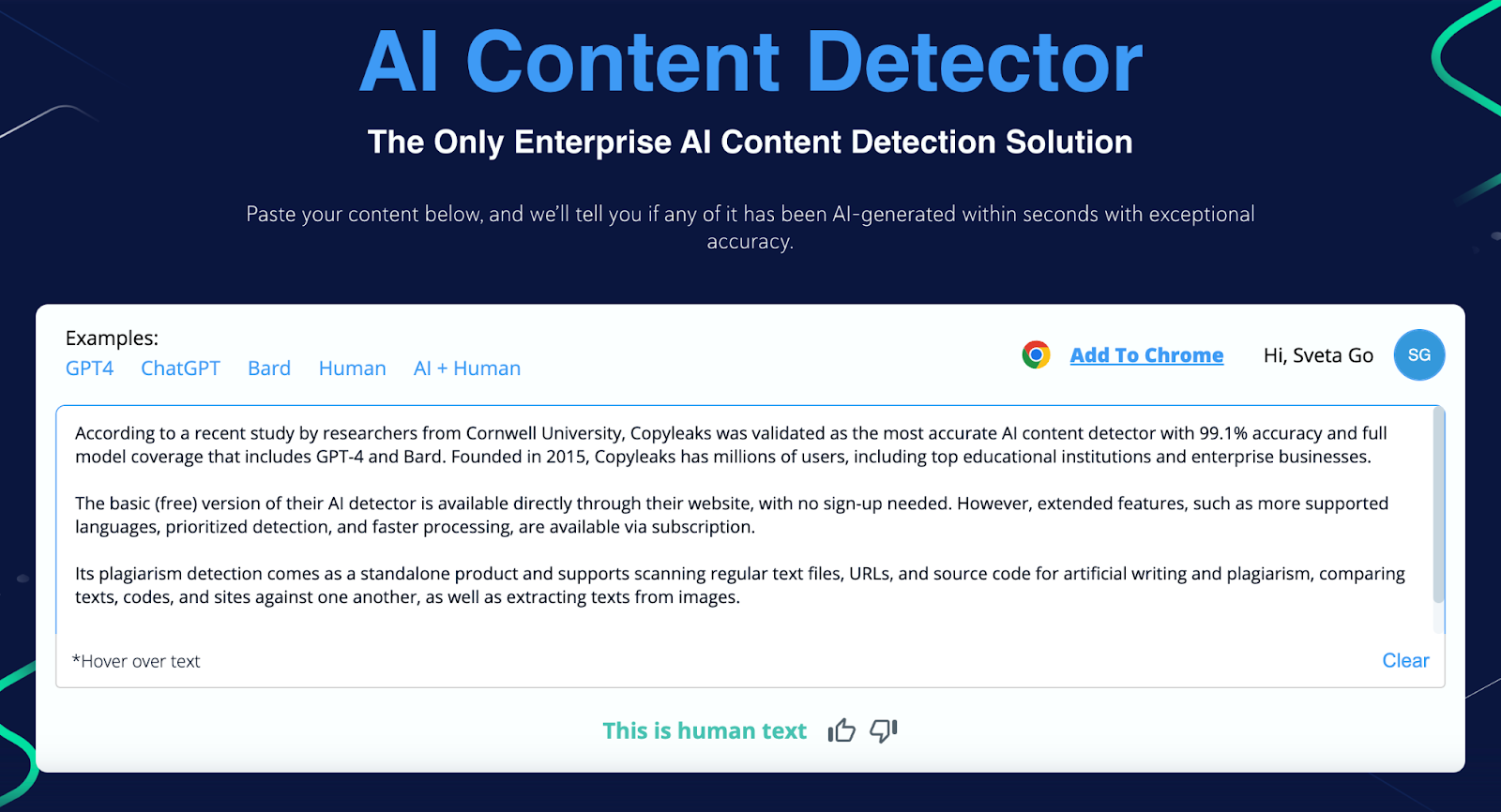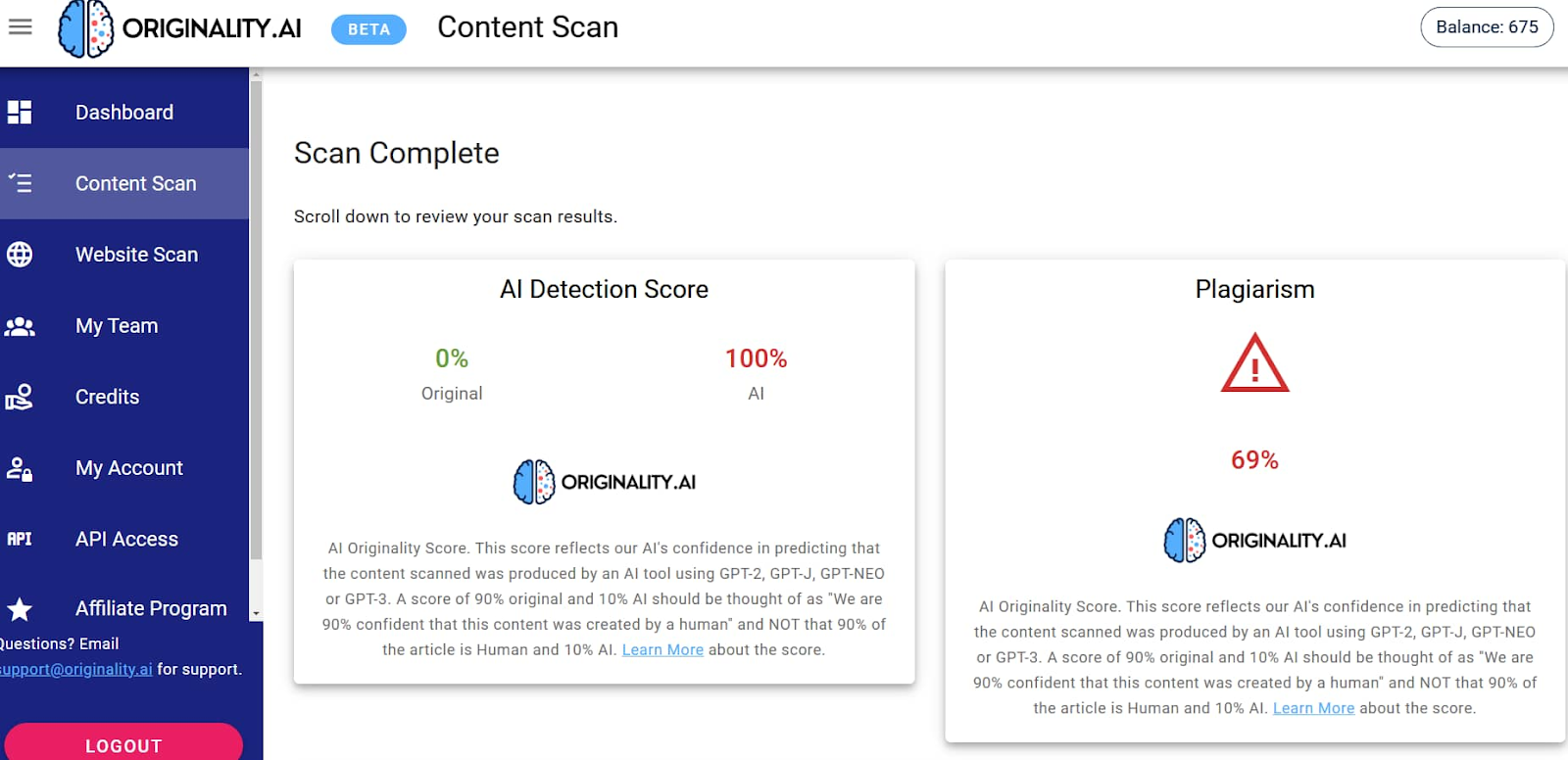Will November 30, 2022, be remembered as the day that changed content writing as we know it forever?
That day marked the launch of ChatGPT, and since then, hundreds of AI-powered copywriting tools, writing assistants, and content creation apps have flooded the internet.
The goal? To help content writers, marketers, and SEO folks create content faster, easier, and more efficiently.
While some of these tools can be quite useful for brainstorming ideas, developing the basic structure of an article, or generating catchy ad headlines, the actual writing might be tricky.
In its current state, pure AI content is far from ideal. While at times it may look and sound well-written and professional, it can also be misleading, irrelevant, or just plain wrong (AKA artificial hallucination). It can also be penalized by search engines and negatively affect your SERP ranking.
As AI writing tools proliferate, it will be critical for content marketers and SEO professionals to vet their content to ensure it’s authentic, trustworthy, and plagiarism-free.
What is AI content detection?
In short, AI content detection is a process that uses a combination of machine learning and natural language processing techniques to figure out whether the text was written by a human or generated by AI.
Tools that use this process are called “AI content detectors” or “AI detectors” and are trained on large datasets of human- and machine-written content to identify patterns in each type of writing.
How do they do this?
By analyzing two main characteristics of the text: perplexity and burstiness.
In other words, how predictable or unpredictable it sounds to the reader, as well as how varied or uniform the sentences are.
If you’ve ever tried ChatGPT or other large language ****** for writing, especially long-form, you’ll notice that AI texts tend to be more predictable and generic when it comes to word choice. The same goes for sentence structure. AI writing tools tend to produce sentences of similar length and more conventional structure.
Human writing, on the other hand, tends to be more dynamic, with less predictable narration and a richer vocabulary. It’s also likely to have more typos than AI-written content. Human error, right?
What is plagiarism detection? And is AI content considered plagiarism?
Unlike AI detection, which is still relatively new and evolving, plagiarism detection has been around for a while.
Created in response to growing cases of plagiarism in the academic world, plagiarism-checking tools compare text against large databases of existing web content, as well as research papers, magazines, journals, and publications, to see if there are any matches between them.
Rather than looking for predictable patterns in words or sentence structure, as AI detection tools do, plagiarism checkers look for exact or sometimes imprecise matches in keywords, phrases, and entire sentences.
Most plagiarism checkers work in a similar way, but their results can vary depending on the databases they have access to.
Since the release of ChatGPT, plagiarism checking has become even more relevant. While AI-generated content may not technically be considered plagiarism because it doesn’t copy phrases or chunks of text word for word, it can paraphrase the content it’s been trained on. And in such cases, a plagiarism checker may as well mark this text as plagiarism.
How to detect plagiarism and AI-generated content
So how do we know what kind of material is in front of us?
For instance, if you work with external writers for your company blog, how do you know if the content they write is original?
The obvious way is to let plagiarism checkers and AI detection software tools do the work. However, especially for AI, there’s one more way: look for so-called “AI-ish” features.
These common signs of AI-generated content include:
- Incorrect and outdated information
- Lack of depth and personality
- Repetitive language
Incorrect and outdated information
Although AI writing can look well-written, it’s always important to check how accurate the actual information is. Since most bots are trained on limited data sets (in time, form, or source), they may not have access to the latest and most complete information.
For example, ChatGPT’s knowledge is limited to data published until September 2021, which means that whatever happened after that **** simply won’t be in its memory. This, in turn, can lead to so-called hallucinations and misinformation that only we humans can detect for now.
Lack of depth and personality
Because AI tools don’t really write but generate text based on patterns in their training data, they don’t “understand” what they’re writing about in the same way humans do. This results in very superficial and shallow responses, a lack of critical thinking, and deep topic analysis.
They also don’t have a personality, which is why most AI-generated texts lack a personal touch and can sound robotic and emotionless.
In contrast to an AI tool, a journalist or copywriter can have real conversations with subject matter experts in the field they’re writing about. These kinds of conversations lead to deeper understandings, interesting stories, and relatable opinions in a way that is hard to replicate with AI.
Repetitive language
Another common feature of AI is the use of the same words or phrases over and over again.
This may be the result of a specific keyword used in the prompt that an AI then repeats word for word. It can also lack context or just have limited and repetitive training information.
AI ****** are also designed to be cautious and neutral in general, which is why they may rely on more conservative language patterns, which can sometimes look repetitive.
The best AI content and plagiarism detection tools for content marketers
The other way to spot AI language and plagiarism is through specialized detection tools. While they may not be 100% accurate, they can be quite helpful if your AI and plagiarism detection skills aren’t up to snuff, which is most of us, isn’t it?
Plagiarism Checker by The Apps Cloud

If you already have an account with Semrush and are looking for both AI content and a plagiarism detector for your writing projects, then Plagiarism Checker by The Apps Cloud is for you. Designed specifically for the Semrush App Center, Plagiarism Checker comes in handy when you need to quickly check a piece of copy for plagiarism, AI-generated writing, and readability.
This free tool supports plagiarism checking in 34 different languages, and AI-generated content detection is available in English only.
It allows you to check text up to 6,000 characters in length and generates a detailed report highlighting the percentage of AI and plagiarized content, as well as any grammatical issues.
To get started, you need to create a free Semrush account and then get the Plagiarism Checker app from the App Center. Then, all you need to do is copy and paste the text to start your investigation.
Copyleaks

According to a recent study by researchers from Cornwell University, Copyleaks was validated as the most accurate AI content detector with 99.1% accuracy and full model coverage that includes GPT-4 and Bard.
Founded in 2015, Copyleaks has millions of users, including top educational institutions and enterprise businesses.
The basic (free) version of their AI detector is available directly through their website, with no sign-up needed. However, extended features, such as more supported languages, prioritized detection, and faster processing, are available via subscription.
Its plagiarism detection comes as a standalone product and supports scanning regular text files, URLs, and source code for artificial writing and plagiarism, comparing texts, codes, and sites against one another, as well as extracting texts from images.
The pricing for scanning 100 Pages or 25,000 words starts at $10.99 per month.
Originality.ai

Originality.ai also bills itself as “the most accurate Chat GPT, Bard, Paraphrasing, and GPT-4 AI checker,” claiming 99% AI content detection accuracy. The tool is specifically designed for content and SEO professionals who need to ensure that the content they publish is original and plagiarism-free.
The tool doesn’t have a free or ad-supported version because it uses natural language processing techniques that require much more computing power. Unlike most AI content detection tools, Originality.ai also provides a full site scan as opposed to a single document scan and doesn’t have a character limit.
One of the most striking features of this tool is that it not only detects plagiarism and artificial writing but also paraphrased plagiarism, meaning it can tell if the content has been paraphrased or not.
The base subscription for Originality.ai starts at $14.95 per month and provides access to all of the tool’s features, including future ones. Limited access is available for a one-time payment of $30.
Check AI Content with Confidence
As more and more companies add AI writing tools to their marketing toolkits, proofreading and checking for plagiarism and AI language in content created with these tools is becoming the norm.
While AI-generated content is getting better and more human-like, it still needs our attention to make sure the final draft is original, trustworthy, and has that personal touch that makes a story stand out.
Source link : Semrush.com
